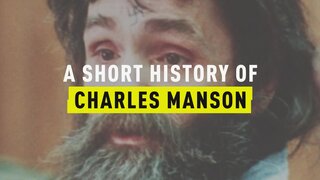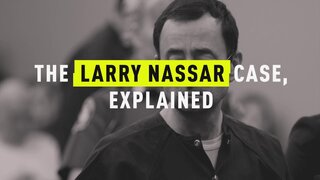Create a free profile to get unlimited access to exclusive videos, breaking news, sweepstakes, and more!
Who Is Alonzo Sellers And What Role Did He Play In The Case Of Hae Min Lee?
Alonzo Sellers told police he found Hae Min Lee's body in Baltimore’s Leakin Park on Feb. 9, 1999.
Update: On Sept. 19, 2022, a Baltimore judge ordered the release of Adnan Syed after overturning his conviction for the 1999 murder of his ex-girlfriend Hae Min Lee. The move happened after Baltimore State’s Attorney Marilyn Mosby filed a motion to vacate Syed’s conviction, citing evidence that casts doubt on the original case. Read more about that evidence here.
In Baltimore in 1999, the body of high schooler Hae Min Lee, found in Leakin Park, and soon after, her ex-boyfriend Adnan Syed was sentenced to life behind bars for her murder.
"Serial," a podcast that examined if Syed was actually guilty captivated the world in 2014. People took to the internet in droves to armchair investigate and share theories about Syed's role in the murder of classmate and ex-girlfriend Lee.
One of the questions: Who is Alonzo Sellers, the man who found Lee in that shallow grave and how did he stumble upon her?
Sellers told police he found the body in Baltimore’s Leakin Park on February 9, 1999. He claimed he was driving, all while drinking a 22-ounce Budweiser, on the way back to a school where he worked as a maintenance man, when he realized he had to urinate. So, he pulled off the side of the road to go the bathroom.
“I had to go to the bathroom so I pulled over and I went further in the woods so no one could see me,” he said in an interview that is part of the new HBO series "The Case Against Adnan Syed." “I walked around through the bushes and everything and I got back that way and I was getting ready to urinate when I looked down I seen something that looked like hair, something was covered by the dirt. And I looked real good again, and that’s when I seen what looked like a foot.”
He walked quite a ways for someone who just has to pee, according to Sarah Koenig, the host of “Serial.” He said he was drawn to that area where the body was found because it was a clearing, but he briefly became a suspect in the case because of how far he walked to urinate, a whopping 127 feet, according to the podcast. He was interviewed by police nine days after he found the body and police questioned him about why he chose that area.
“They go over his details carefully because there are parts of his story that are a little weird,” Koenig said in episode three of the 2014 podcast.
However, she went to the spot where he found the body and determined that it did make sense after all why he’d walk so far.
She said that although the body was “nearly impossible to spot” in photographs of the crime scene because it blended with the natural surroundings of the ground, “127 feet doesn’t seem that far back if you're looking for privacy.”
Koenig noted that you could still see cars from the road.
Sellers, who Koenig referred to as Mr. S in Serial, also had a bit of a criminal past — as an alleged streaker. He had several indecent exposure charges, including one in 1994 for allegedly running naked in a residential neighborhood and another in 1996 after he was allegedly spotted in a hoodie, white sneakers sunglasses and nothing else. He ran from police and jumped chain link fences in that incident. Not long before Lee was killed he also allegedly stood naked in front of a uniformed police officer in her car.
However, when it came to finding the body Koenig noted that he passed a polygraph test and he soon faded as from law enforcement’s minds as a suspect in the murder of Lee.
But in the finale of the four-part HBO docu-series, private investigators Tyler Maroney and Luke Brindle-Khym, who work with Quest Research & Investigations (QRI), revisited the case of Sellers.
Maroney said that over the last six months, he and his partner have been investigating a new angle. Lee’s body was found with several impressions on her collarbone, including one in the distinct shape of a double diamond. Their question is simple: what caused that mark?
“There has been some suggestion that those impressions were made by what’s called a concrete shoe, and this is a tool that’s put on the bottom of a grinder, which you could grind up concrete,” Maroney said. “But the reason this is interesting is that we know that Alonzo Sellers worked in concrete for years and years and years and years.”
Maroney said he and Brindle-Khym tried to speak to Sellers, who they discovered lives only about a five-minute walk from Woodlawn High School, about the murder, but he refused to speak with them.


























